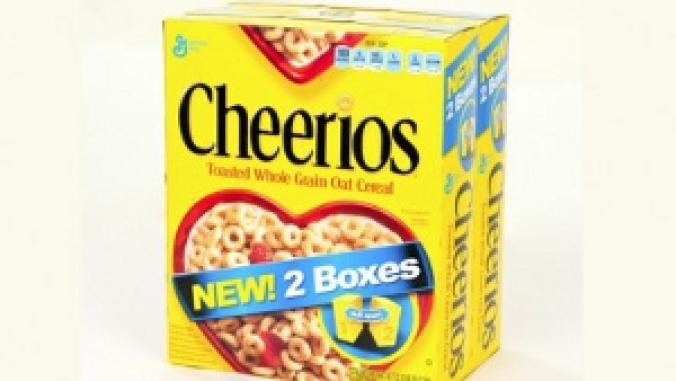Why Walmart wants more consumer pressure for sustainability
<p>A growing number of companies understand that greener products can cut production costs and boost their brands. But can they get consumers to buy in? Here's what corporations such as Walmart and Lenovo have to say.</p> <div> <style type="text/css"> .adslot-overlay {position: absolute; font-family: arial, sans-serif; background-color: rgba(0,0,0,0.65); border: 2px solid rgba(0,0,0,0.65); color: white !important; margin: 0; z-index: 2147483647; text-decoration: none; box-sizing: border-box; text-align: left;}.adslot-overlay-iframed {top: 0; left: 0; right: 0; bottom: 0;}.slotname {position: absolute; top: 0; left: 0; right: 0; font-size: 13px; font-weight: bold; padding: 3px 0 3px 6px; vertical-align: middle; background-color: rgba(0,0,0,0.45); text-overflow: ellipsis; white-space: nowrap; overflow: hidden;}.slotname span {text-align: left; text-decoration: none; text-transform: capitalize;}.revenue {position: absolute; bottom: 0; left: 0; right: 0; font-size: 11px; padding: 3px 0 3px 6px; vertial-align: middle; text-align: left; background-color: rgba(0,0,0,0.45); font-weight: bold; text-overflow: ellipsis; overflow: hidden; white-space: nowrap;}.revenue .name {color: #ccc;}.revenue .horizontal .metric {display: inline-block; padding-right: 1.5em;}.revenue .horizontal .name {padding-right: 0.5em;}.revenue .vertical .metric {display: block; line-height: 1.5em; margin-bottom: 0.5em;}.revenue .vertical .name, .revenue .vertical .value {display: block;}.revenue .square .metric, .revenue .button .metric {display: table-row;}.revenue .square .metric {line-height: 1.5em;}.revenue .square .name, .revenue .square .value, .revenue .button .value {display: table-cell;}.revenue .square .name {padding-right: 1.5em;}.revenue .button .name {display: block; margin-right: 0.5em; width: 1em; overflow: hidden; text-overflow: clip;}.revenue .button .name:first-letter {margin-right: 1.5em;}a.adslot-overlay:hover {border: 2px solid rgba(58,106,173,0.9);}a.adslot-overlay:hover .slotname {border-bottom: 1px solid rgba(81,132,210,0.9); background-color: rgba(58,106,173,0.9);}a.adslot-overlay:hover .revenue {border-top: 1px solid rgba(81,132,210,0.9); background-color: rgba(58,106,173,0.9);}div.adslot-overlay:hover {cursor: not-allowed; border: 2px solid rgba(64,64,64,0.9);}div.adslot-overlay:hover .slotname {border-bottom: 1px solid rgba(128,128,128,0.9); background-color: rgba(64,64,64,0.9);}div.adslot-overlay:hover .revenue {border-top: 1px solid rgba(128,128,128,0.9); background-color: rgba(64,64,64,0.9);} </style> </div>

Selling green products can be complicated: When it comes to environmental consciousness, what consumers say they want doesn't always match up with what they actually buy.
In a free hour-long webcast Tuesday (registration required), speakers from Walmart (NYSE: WMT), Lenovo and sustainability consultancy UL Environment discussed what they're doing to try to bridge that gap. GreenBiz Executive Editor Joel Makower moderated the discussion.
One issue is a difference between how consumers and companies think -- and talk -- about sustainable products.
“It’s not just about recycled content anymore,” said Libby Bernick, vice president at UL Environment. There are other considerations, such as how long a product lasts. “But a majority of consumers or buyers don’t know what life cycle means.”
Consumers often choose products based on what they think "green" means, Bernick said, instead of looking at the scientific results of a product's environmental impact.
Better marketing is one way to encourage consumers to go green, Bernick said. She suggests companies publicize their sustainability efforts, making it known that they use fewer packaging materials, for instance, or that they oppose sweatshop labor. Involving consumers in these efforts is also helpful, Bernick said. U.K. retailer Marks & Spencer (M&S), for example, teamed up with Oxfam Clothes Exchange to offer people M&S vouchers when they donate clothes to the charity.
Companies should also consider having their products accredited by an outside source. For customers who want to buy the most environmentally friendly goods, choosing the greenest product isn't always easy. They are more likely to trust an external certification over a company's own endorsement of a product.
Mary Jacques, senior engineer at computer company Lenovo, said knowing who and what measurements to use can be a challenge.
“It can be very daunting to know where you put your resources and what labels are the most meaningful to customers,” Jacques said.
Jeff Rice, director of sustainability at retail giant Walmart, said his company is developing measurements and working with The Sustainability Consortium to set standards and get buy-in from companies. A customer campaign is also planned.
“We’re not just doing this because of consumer pressure,” he said. “Frankly we’re not getting enough consumer pressure.”
Others have noted the trend of companies pushing consumers on green issues, instead of the other way around. In a story yesterday, GreenBiz contributor Marc Gunther wrote about companies -- like GoodGuide -- that are trying to get consumers to make greener choices by providing more information about products, including how and where they are made, and what they consist of.
If they succeed and the number of consumers buying green products grows, it will put more pressure on companies to be sustainable -- but also will grow the market for products from sustainability leaders.




